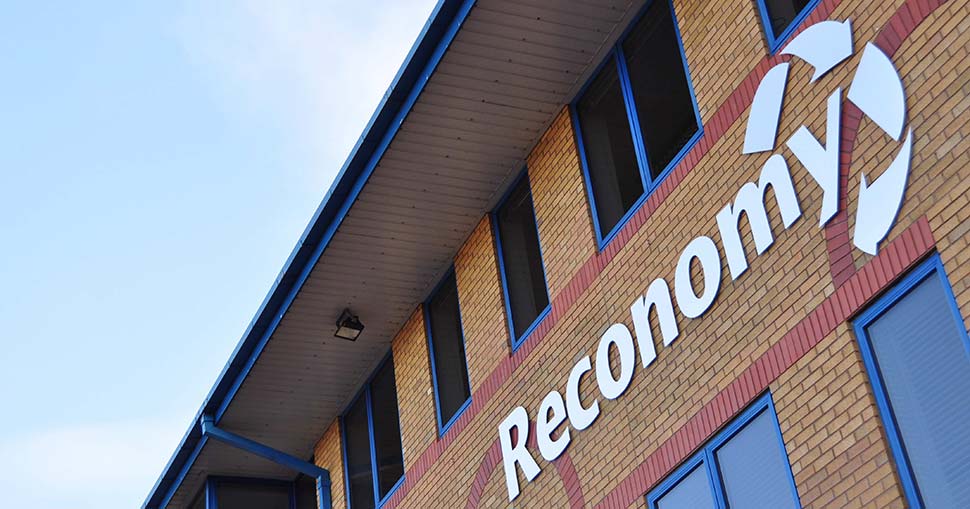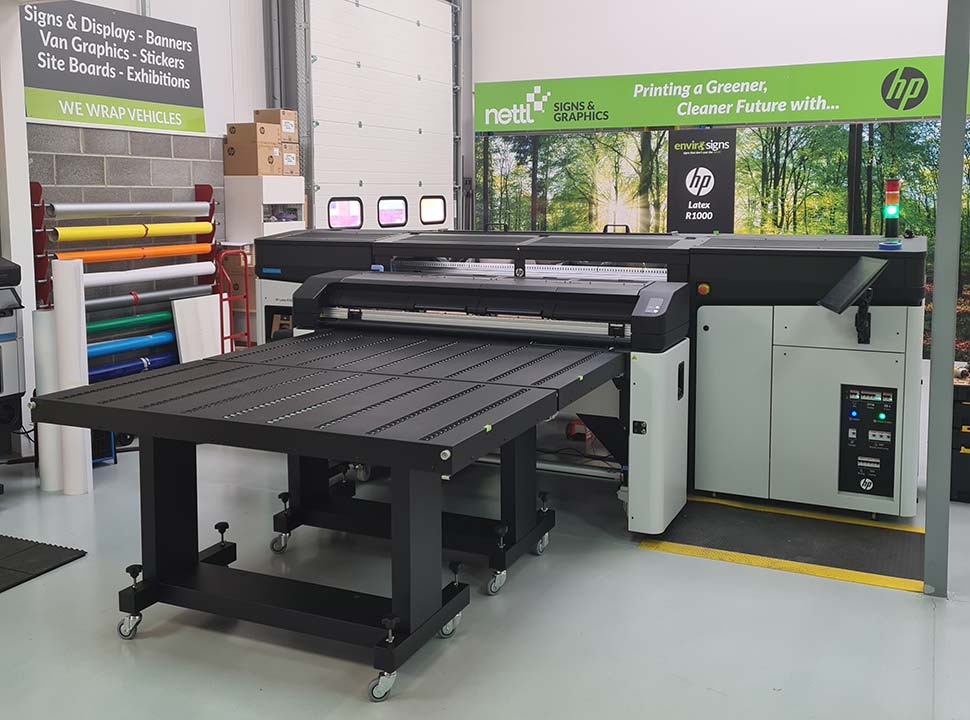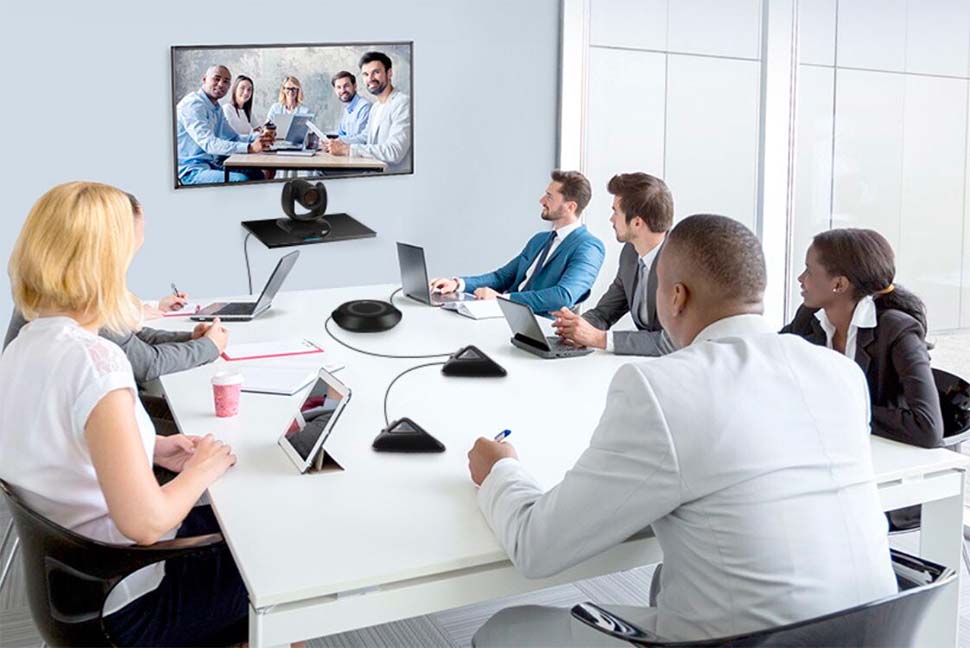Plenty has been said and written about why PSPs need to adopt a more sustainable approach to business. After all, there is an almost endless list of benefits of doing this: attracting like-minded customers, becoming more attractive to potential clients, reducing your own impact on the world around us, and so on.
While all this is very much true and relevant, much less has been said and written about what PSPs and similar print businesses can do to actually become a more planet friendly operation. What makes the situation worse is the myth that adopting such an approach is very costly and requires a lot of investment.
Yes, of course there will be some level of cost involved in switching your approach. However, at the same time, these costs are not necessarily as high as PSPs may initially fear, and any spending to make your business more attractive to customers with similar values and bringing these clients on board as a result of this shift will be worth it in the long term.
So, what can PSPs do without breaking the bank? What are the most cost-effective ways of painting your business in a greener, more sustainable light?
Thinking and acting sustainably
Perhaps the best place to start would be with a company that works with print businesses to provide them with the solutions to become sustainable. Reconomy delivers waste management services to a range of sectors, including print and its related markets. Director Jon Hutton said thinking and acting sustainably as a business is critical to secure your long-term future.

Reconomy delivers waste management services to the print industry
“When we think about waste and resources, virgin resources are becoming more and more scarce,” he said. “The reliance on this material is only going to end up costing you more. So, it makes sense – commercially and environmentally – to switch to recycled alternatives and consider what resources your business is using and more importantly, wasting.
“Simply put, the cost of doing nothing is high. Sustainability is firmly on boardroom agendas across the industry, and more pressure from brands and retailers is starting to force sustainable thinking downstream. That means all businesses need to be looking at what they do through a sustainability lens, moving away from a linear approach, towards a more regenerative, circular one.”
Hutton acknowledged that the prospect of changing your business to be more sustainable can be a challenge, with some not knowing where to start. He recommends breaking it down and, using the data, start chipping away at the problem.
With this, he picks out three takeaways that are realistic and achievable as a starting point, without having to make any fundamental operational changes to a business.
The first of these is a duty of care in terms of sending waste to landfill. Businesses are legally required as a waste producer to know how their waste is treated and what its end destination is. If any of it is going to landfill, there is an opportunity here to ask contractors to change this to at least go to a waste to energy facility.
“This is one step up on the waste hierarchy and although a small step, it is a step in the right direction,” Hutton said.
Hutton also advised PSPs to ensure their house is in order by assessing the efficiency of their waste management. This includes looking at what is going in general waste bins and if there are recyclable materials that can be pulled out and separately collected for recycling.
He also said PSPs should look at their container types to see if they are only half-filling bins and effectively paying to dispose of fresh air, as well as assessing the frequency of collections to reduce them and cut carbon emissions from unnecessary trips. In addition, on-site hardware such as a baler or compactor could allow you to store waste and reduce the number of collections.
The third recommendation from Hutton was to take a specialised focus. Once PSPs have carried out all of the ‘standard’ measures, they should consider reaching out to federations, suppliers and specialists to get advice on how to take it to another level.
“Managing the recycling and disposal of waste is only part of the equation,” he said. “Going back to the start point of the product lifecycle, at product design, to understand material content is where you can start to expand out. There will likely be opportunities to target the prevention of unnecessary materials, and secondly factoring in the ease of recyclability for the remaining content.”
Shine a greener light with Solar
The ‘make smarter choices’ advice covers not only how you process waste but also the materials you work with. Minimise or cut out non-recyclable waste at an earlier stage and this could have a significant impact on your sustainability.
Soyang Europe is not only itself a Carbon Neutral company, but also provides customers with planet friendly options when it comes to materials. Much of this is focused on offering an alternative to products featuring PVC, widely considered to be the most environmentally damaging of all plastics.
The Solar range is Soyang’s answer to the issue, offering customers a PVC-free solution that delivers the same, high-impact benefits of PVC products. Mark Mashiter explained: “Solar is a truly innovative textile-based banner, aiming to be the perfect replacement for PVC with extremely similar features.
“The Solar series is suitable for indoor and medium-term outdoor applications yet 100% PVC-free, phthalate-free, and also can be made from recycled yarns, offering eco alternatives to help our clients create a more sustainable future for humanity.”
Soyang also has G-tex, a textile made from recycled yarn that offers another sustainable option to its customers. In addition, Soyang’s partner company Endutex recently set out its long-term commitment to delivering more planet friendly solutions to customers in the print sector.
“Endutex was always at the forefront to develop sustainable solutions for digital printing and, over more than a decade, our R&D department developed new products spanning a full range of applications suitable for different ink types, from solvent based to UV, latex and dye sublimation technologies,” Endutex said in a recent presentation.
Included in the Endutex range of sustainable solutions are PVC-products, all of which are fully recyclable, across its Terratex, Recytex and Sublitex collections.
Last year, Soyang also added the Biotex range of materials from Endutex. The Biotex collection comprises two core product types: biodegradable fabrics that are cotton or lyocell fiber-based, and bio-based solutions produced using 100% recycled PES yarn fabric and coatings obtained from plant-based biomass such as vegetable oils and sugars.
Aside from offering these sorts of products, Soyang offers a service whereby it will deliver materials to a customer and take away any waste left from earlier jobs. What makes this particularly attractive is that Soyang will not only collect waste from its own products, but also that of competitors, saving the PSP time and money having to sort separate collections.
Re-think on recycling
The importance of material choice was echoed by John Draycott, Marketing Manager at ArtSystems. He said moving to less impactful media is a good thing but needs to be part of the design process.
“Trying to use less impactful media to make up for a design that is already environmentally impactful will only be partially successful,” Draycott said. “Media that is produced from sustainable and well managed sources such as FSC and PEFC is also really important as it supports the wider supply chains to become more sustainable.”
However, for the system to become clearer and more achievable for print businesses, Draycott said that there needs to be a total re-think on recycling to ensure media that can be recycled is actually recycled.
“Now, with some notable exceptions, most media, even if recyclable, simply ends up in landfill,” he said. “The debate between recycling and carbon reduction also leads to often contradictory positions, there needs to be clearer government guidance and management.
“Obviously, reduction is key to any sustainable strategy; use less to achieve more. It’s self-evident but it’s hard. If reduction of resource is not central to the policy, it simply won’t work.
“Offset is at best what is used to help manage what can’t be reduced at that point, but the policy should be dynamic; what you off set one year you should be looking to reduce or replace the next year. Offset can appear to be an easy solution, but it needs to be a very rigorous and well managed programme.
“I’ve seen media products offering to plant X number of trees per roll giving the impression this negates the impact of the media; given that the total impact of most products from cradle to grave are simply not known its highly unlikely it does negate the impact. By all means support tree planting but to make a non-provable connection to product environmental impact is ‘green wash’.”
Equip yourself for sustainability
Away from media, Draycott said considering the type of equipment you are running will also have an impact on your overall environmental impact. However, PSPs need to properly research products to understand their true environmental benefits.
“Until more transparent industry recognised and policed standards of how this is measured in the real world, there is always the danger of ‘green wash’,” he said. “But intrinsically choosing print technology that has the lowest energy usage, the lowest emissions, and the highest environmental ratings is really all that can be done. The fact is that until the full life cycle impact of a printer technology is known, it’s hard to make a fact-based judgement.”
One of the manufacturers that has proven the environmental credentials of its technology is HP, specifically with HP Latex. Printers in this range use water-based inks, which, unlike other ink technologies, are kinder the environment as they do not contain hazardous air pollutants or odours.
Honing down on one machine in particular, Jane Rixon, Business Development Manager for Signage and Decoration at HP, has picked out the HP Latex R1000 press as one product that PSPs can consider adding to their production line-up to make it a more sustainable operation.
“The HP Latex R1000 has several sustainability credentials that make it a more environmentally friendly option compared to traditional printing technologies,” Rixon said. “Aside from its use of water-based inks, the printer is compatible with a range of recyclable materials, including cardboard, aluminium, and other materials, helping reduce waste and promote sustainability in the print industry.
“The printer also produces very little waste, thanks to its advanced automatic maintenance system, which reduces ink waste and optimizes the ink usage. It is also certified by leading environmental organisations including UL Ecologo, ZDHC, Toy Safey Regulations EN71-3 European Children and Toy Health * Safety Norm and Toy safety standards in US and Canada, plus UL Greenguard Gold for unrestricted full room coverage.”
The proof is very much in the pudding with the HP Latex R1000, as the manufacturer has a whole host of examples of how the machine has helped users with their sustainability. Digiprint Nettl took on its HP Latex R1000 in January this year and it has already allowed the PSP to launch a new range of environmentally friendly products and services.

Digiprint Nettl’s new HP Latex R1000 allowed it to roll out environmentally friendly products and services
“Having already offered HP Latex to our customers for roll-to-roll printing, adding the flatbed option with an HP R1000 will deliver new markets instantly,” Digiprint Nettl Director Ben Gregory said. “We have secured contracts with schools, councils, government bodies and larger businesses all due to the increased eco-friendly options available to us now.
“Within a week of installing the HP R1000 we had customers enquiring about new products and services that were previously not achievable. For example, a customer who uses our business for regular print has placed orders for bespoke packaging boxes for large items and has ordered point of sale and pallet wrappers to match.”
HP Latex users, and customers running other HP machinery, also benefit from the manufacturer’s range of environmental schemes, each of which is designed to further enhance their eco credentials.
The HP Planet Partners programme is an intuitive, simple and sustainable way of recycling supplies for print businesses. Running since 1991 and available in 76 countries and territories around the world, the initiative allows HP users to recycle HP ink and HP ink printheads via an easy process.
“Simply store your cartridges in a HP Planet Partners box, which, when full, is collected and sent away to be recycled and repurposed,” HP’s Rixon said. “Not only is this an efficient way to dispose of your ink cartridges and print heads sustainably, but it is also completely free. HP uses state-of-the-art recycling facilities to process each return through a multi-phase recycling process. No HP print cartridges returned and recycled through Planet Partners are sent to landfill.
“Products are sorted and shredded, then separated into plastics and metals. Residual ink, foam or toner are also separated and disposed of in an environmentally responsible manner. Recovered plastic and metal materials are further processed into their raw forms so they can be used in new HP computers, printers, and print cartridges.”
Passion for sustainability
There are plenty of other examples of PSPs being innovative with their operations to become more sustainable. FESPA UK member and commercial, retail and displays specialist Stylographics is one such company, with its Operations Director Simon Wheeler setting out some of the simple steps the company has taken in recent years.
“By far the most important part of our sustainability process is to employ someone who sees this as their passion, with an individual that has this in their DNA you can start to work on employee engagement and education,” Wheeler said. “We can raise awareness among the rest of the team, about sustainability and provide education on sustainable practices. We believe encouraging the rest of the team to adopt sustainable behaviours both at work and in their personal lives can create a culture of sustainability within the organisation.
“We have streamlined our accounts process embracing new technology to become paperless for invoicing, receipts, and expenses. This reduces the use of paper, minimises printing and mailing costs, and decreases environmental impact.
“We are also looking at how we can cost-effectively measure our carbon footprint so we can understand and report our environmental and social performance.”
Other steps taken by Stylographics include investment in a cost-effective conference system for less than £8,000, allowing it to host virtual meetings and remote work, reducing the need for staff to travel. The company has also sourced suppliers that have sustainable materials.

Installing video conference equipment will help cut down on travel and journeys
“We have sought out collaborations with clients, suppliers, local businesses and local government and partnerships,” Wheeler said. “Our sustainability focused initiatives have addressed challenges.
“By sharing best practices, knowledge, and resources, we can help drive industry-wide sustainability improvements and achieve more significant impacts, especially with the likes of FESPA and other trade associations.”
Wheeler’s closing comments offer something of an apt conclusion to this piece. While there are plenty of simple, and often relatively cheap, things PSPs can do to become more sustainable, the best place for them to start is by speaking with partners and allies to consider the easiest options available to them.
You do not necessarily have to plough tens of thousands of pounds into state-of-the-art solar power or electric vehicles; starting small will still bring plenty of benefits in both the short and longer run.
By Rob Fletcher



